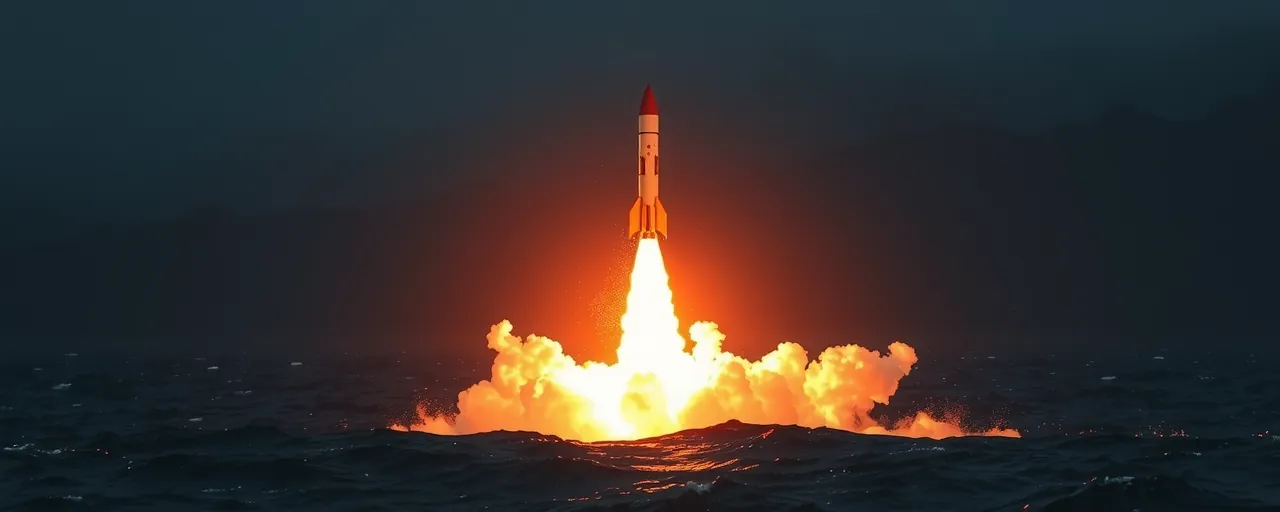A Milestone in Missile Technology
The U.S. Navy recently conducted a successful test of a hypersonic missile, launched from Cape Canaveral Space Force Station in Florida. This test, part of the Conventional Prompt Strike (CPS) program, marked a significant step toward deploying these high-speed weapons on naval platforms. The missile, designed to travel faster than five times the speed of sound, promises to deliver precise strikes over vast distances, a capability that could reshape military strategy.
Unlike traditional missiles, hypersonic weapons combine speed, maneuverability, and unpredictability, making them difficult to intercept. The Navy’s test utilized a cold-gas launch system, which propels the missile away from the ship before its rocket motor ignites, enhancing safety for the crew. This achievement brings the Navy closer to integrating these missiles on Zumwalt-class destroyers, with testing at sea planned for 2027 or 2028.
The CPS program, developed in partnership with the Army, reflects a broader push to modernize U.S. military capabilities. The same hypersonic glide body tested in Florida will also arm the Army’s Dark Eagle system, set for deployment by late 2025. For many, this test signals progress in a high-stakes effort to keep pace with global competitors. Yet, it also raises questions about the broader implications of such weapons.
The Global Race for Hypersonic Supremacy
The development of hypersonic weapons is not unique to the United States. China and Russia have already fielded operational systems, with China’s DF-17 and Russia’s Kinzhal missiles leading the pack. Russia has used the Kinzhal in Ukraine, though some have been intercepted, casting doubt on claims of invincibility. Other nations, including India, France, and Australia, are also investing heavily in hypersonic technology, often through partnerships with major powers.
This global competition drives innovation but also fuels concerns about stability. Hypersonic weapons, capable of striking targets in minutes, compress decision-making timelines for leaders, increasing the risk of miscalculation. Some analysts argue that their speed and unpredictability could deter aggression by making attacks costlier for adversaries. Others warn that their deployment might escalate tensions, as nations scramble to counter each other’s advancements.
The proliferation of hypersonic technology adds another layer of complexity. As more countries pursue these systems, the potential for regional conflicts to escalate grows. Collaborative efforts, like the AUKUS pact involving the U.S., UK, and Australia, aim to share expertise, but they also risk accelerating the spread of advanced weaponry.
Balancing Security and Domestic Needs
The push for hypersonic weapons comes at a significant cost. The Pentagon’s 2025 budget allocates nearly $7 billion for hypersonic research, a sharp increase from $4.7 billion two years ago. Supporters argue that this investment is essential to maintain a technological edge and deter adversaries like China and Russia, who are rapidly expanding their own arsenals. They point to the Navy’s CPS program as a critical tool for rapid, precise strikes against high-value targets.
However, critics question the prioritization of such programs over domestic needs. With the U.S. defense budget reaching $850 billion in 2025, some lawmakers and advocacy groups argue that funds could be better spent on healthcare, education, or infrastructure. They note that rising personnel costs and flat budgets already strain modernization efforts, forcing tough choices between maintaining current forces and investing in future technologies.
The debate extends beyond dollars and cents. Some experts worry that hypersonic weapons could destabilize global security by blurring the line between conventional and nuclear capabilities. Advocates counter that these systems strengthen deterrence by offering flexible, non-nuclear options. Both sides agree that transparent communication and arms control measures are vital to managing risks.
Looking Ahead: Opportunities and Challenges
The Navy’s CPS program is on track to transform how the U.S. projects power. By 2028, Zumwalt-class destroyers and Virginia-class submarines could carry these missiles, providing a versatile strike capability. The program’s success hinges on overcoming technical hurdles, such as ensuring reliable integration with naval platforms. Recent tests, including the cold-gas launch, suggest progress, but challenges remain.
Beyond the technical, the broader implications of hypersonic weapons demand attention. Their development reflects a broader trend of emerging technologies, from AI to quantum computing, reshaping warfare. These advancements offer opportunities for greater precision and efficiency but also introduce risks, from ethical concerns to the potential for unintended escalation. As the U.S. navigates this new era, balancing innovation with stability will be key.
